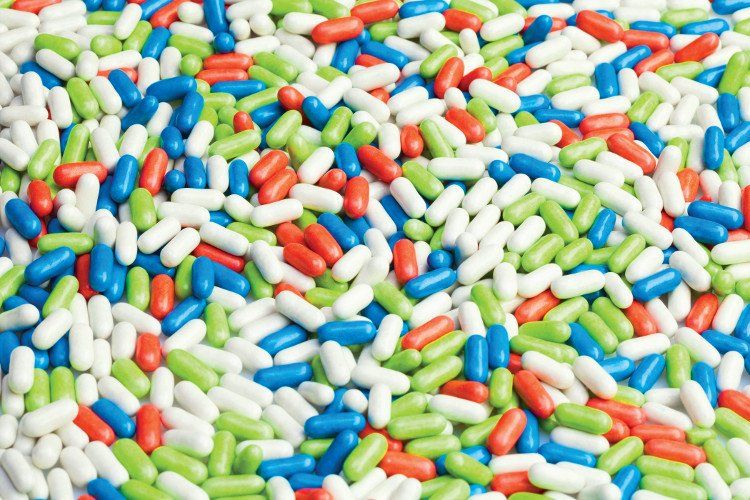Article
Getting the Dose Just Right
Author(s):
There is inadequate information regarding optimal antipsychotic doses in the treatment of acute schizophrenia that balance efficacy and safety. This article helps you get it right.

RESEARCH UPDATE
There is inadequate information regarding optimal antipsychotic doses in the treatment of acute schizophrenia that balance efficacy and safety. The “minimum effective dose” (MED) is the lowest dose of a medication that significantly differs from placebo in terms of efficacy.1 An international consensus study recommended that antipsychotic dosing in acute schizophrenia should aim for 2-fold to 3-fold MED.
Takeuchi and colleagues2 investigated relationships between MED and efficacy and safety in acute schizophrenia. The MED for each antipsychotic was identified from a previous systematic review and recent dose-response meta-analysis.3,4 The authors defined the MED as follows: aripiprazole 10 mg/day, asenapine 10 mg/day, brexpiprazole 2 mg/day, cariprazine 1.5 mg/day, clozapine 300 mg/day, haloperidol 4-4.5 mg/day, iloperidone 8-12 mg/day, lurasidone 40 mg/day, olanzapine 7.5-10 mg/day, paliperidone 3-6 mg/day, quetiapine 150-250 mg/day, risperidone 2-4 mg/day, and ziprasidone 40-80 mg/day.
Studies were selected from a recent dose-response meta-analysis of antipsychotics and haloperidol. They identified randomized, double-blind placebo-controlled trials of fixed-dose antipsychotic monotherapy in adults with acute schizophrenia thatd compared the identified MED with higher doses of the same oral antipsychotic. They excluded fixed-dose range studies. The researchers independenly extracted clinical outcomes for the MED and higher dose groups: (1) number of discontinuations due to all causes, lack of efficacy, and adverse events, (2) mean changes from baseline to endpoint in psychopathology scores, (3) mean changes in assessments of extrapyramidal symptoms and akathisia, and (4) the number of patients who experienced individual treatment-emergent adverse events (TEAEs).
Outcome data were combined and compared between the MED and 2-fold or 3-fold MED groups. Data were pooled using a random effects meta-analysis, with risk rations (RRs) for dichotomous outcomes, and standardized mean differences (SMDs) for continuous measures. Funnel plots were inspected visually for possible publication bias.
Twenty-six studies, comprising 5618 patients, were eligible for inclusion in the meta-analysis. All were short-term studies with a duration of 4-16 weeks. There were no significant differences in discontinuation due to all causes or adverse events between MD and 2-fold or 3-fold MED. However, MED was associated with significantly higher risk of discontinuation due to lack of efficacy than 2-fold MED (RR=1.24) or 3-fold MED (RR=1.44). 2-fold and 3-fold MED were associated with significantly greater reduction in total (SMD=0.08 and 0.17, respectively) and positive (SMD=0.12 and 0.17, respectively) symptom scores, and the clinical global impression severity scale score (SMD=0.15 and 0.18, respectively) versus MED. 2-fold MED was inferior to MED for parkinsomism scores (SMD=-0.15). In terms of TEAEs, 2-fold MD was inferio to MD for diarrhea (RR=0.36) and 3-fold MED was inferior for akathisia (RR=0.36), somnolence (RR=0.65), and vomiting (RR=0.51). There was no evidence of publication bias.
The authors concluded that:
1. 2-fold and 3-fold MED were superior to MED for effectiveness and efficacy
2. MED was superior to 2-fold and 3-fold MED for side effects
3. 3-fold MED was associated with greater effectiveness, efficacy, and side effects than 2-fold MED
These findings suggest dose-dependent relationships. They note that 2-fold and 3-fold MED are still approved by authorities as a licensed dose and within international consensus recommendations. They also note that findings do not suggest that clinicians should increase antipsychotic dose if a patient does not respond to MED. Findings also suggest that extrapyramidal symptoms, somnolence, and digestive symptoms of antipsychotics occur in a dose-dependent fashion. The authors note that findings should be interpreted with caution in light of small numbers of studies (or no studies) for some individual antipsychotics, and that data were combined across all antipsychotics despite differences in pharmacological profiles.
The bottom line
Clinicians can dose antipsychotics at 2- to 3-fold MED for patients with acute schizophrenia, but must balance dose-dependent symptomatic improvement with side effect exacerbation.
References:
1. Leucht S, Samara M, Heres S, et al. Dose equivalents for second-generation antipsychotics: the minimum effective dose method. Schizophr Bull. 2014;40:314-326.
2. Takeuchi H, MacKenzie NE, Samaroo D, et al. Antipsychotic dose in acute schizophrenia: a meta-analysis. Schizophr Bull. May 16, 2020; Epub.
3. Gardner DM, Murphy AL, O’Donnell H, et al. International consensus study of antipsychotic dosing. Am J Psychiatry. 2010;167:686-693.
4. Leucht S, Crippa A, Siafis S, et al. Dose-response meta-analysis of antipsychotic drugs for acute schizophrenia. Am J Psychiatry. 2020;177:342–353.





